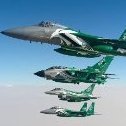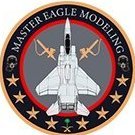Search the Community
Showing results for tags 'Saudi'.
-
Dekls saudi hawk made using the revell 1/72 red arrows kit. The decals were difficult to apply as they required 2 layers to get the colours right and cutting around the fins on the wing but they look OK now. Paint used is revell emerald green
-
Hello guys I would like to show you my model F-15C National day 91 special livery the kit is Tamiya F-15C 1/48 the decal is custom made I hope you like it ˆ_ˆ real photo for the aircraft
- 12 replies
-
- 37
-

-
My entry: Scheme will be as the boxtop, with colours subject to guesswork/whatever I have in my Gunze collection that looks close. A
-
Hi all, I am giving some serious consideration to building a Saudi Tornado (in the older desert camo) and want to know which Revell 1/48 boxing I need to buy to cover the mark the Saudi's use, or even if both boxings have identical parts inside. Thanks. Craig.
-
I've been given a Revell Tornado F2 in 32nd scale to build as a Saudi F3. Specifically the F3 that is On the gate of the RSAF museum here in Riyadh. It's for one of the guys who put that airframe there. I was on GR1's so the F's are slightly off topic for me. Main question is, The box says F2 but markings inside are (or seem to be) for a RSAF F3? So what is the main difference? This will be a quick/simple build, OOB with anything extra scratchbuilt. The seats for example are awful! Any help gratefully accepted. My payment? an Airfix 1/48th Buccaneer. Fair swap! Pete
-
Link to pics of Middle Eastern lightnings. Found on Hyperscale.com Including one that looks like it's in a pub garden. Enjoy http://www.network54.com/Forum/149674/message/1388347754/Arabian+Lightnings Pete
-
AuF1 Self-Propelled Howitzer 1:35 Meng Models Developed from the successful AMX-30 Main Battle Tank, the AuF1 is a 155mm howitzer that as well as being rather heavy (over 41 tonnes), is also fast and manoeuvrable, as well as having an automatic loading system giving it a high sustained fire rate of 6 rounds per minute, and burst mode of 8 RPM on a good day. Because the vehicle has sufficient room inside for the whole 4-man crew to travel inside the cab, it has quite a high profile, but because it has a range of almost 24km it has little need for stealth, and is in fact only lightly armoured to a thickness of 20mm to withstand small arms fire. The AuF1 is used by the French army, all of which are now upgraded to the AuF2 spec, as well as the Saudis who have over 50 units on strength. Iraq had 85 that saw action during the Iran/Iraq war, but following the first Gulf War, some remained intact, possibly because they were unable to take part in operations due to a lack of spares caused by the years of arms embargoes in the run up to the conflict. There were rows of abandoned machines at a former Republican Guard base that made for quite an impressive sight. The Kit Following Meng's launch of the AMX-30 recently, it made sense from a tooling point of view to create the parts to complete this imposing, although lesser-known howitzer, and fans of French armour will rejoice that there is now a kit of this beast in styrene with a modern tooling. I'd not heard of the vehicle before its announcement, but it has quite an impressive look, and should look good on the shelf next to the American M109 and the British AS90. The kit arrives in Meng's by now familiar matt finish top opening box, so your Meng kits will stack nicely together, which is a bit of a bonus when you have a large number in the stash. Opening the box reveals eleven mid-green sprues, plus five in brown styrene, a clear sprue, separate lower hull, two sheets of Photo-Etch (PE) brass, a small sprue of poly-caps, a decal sheet, and the instruction booklet. All but the roadwheel and track sprues are individually bagged to prevent chaffing. Construction of the lower hull is identical to the AMX-30, as you'd expect, with paired drive wheels attached to the suspension arms by friction fit of the poly-caps, and full-length torsion bars mimicking the real suspension. The upper hull is ostensively the same too, with the same hatches on the glacis plate at the front, side pioneer tool panels, and the rear bulkhead/radiator/exhaust assemblies. The main difference, such as it is concerns the long bar that rests on the rear of the engine deck on the Auf-1, but on the rear bulkhead on the AMX-30. The light clusters, spare fuel cans and external telephone are all present, as are the PE grilles that cover the hot exhausts. The front mounted tool box assemblies differ in the equipment that is fastened to them, and an additional panel is attached at the front of the glacis plate to make this section symmetrical, and a more robust set of headlamp covers are included. The tow ropes are consigned to the port side panels with the pioneer tools. The tracks are of course identical, with the ingenious part C10 providing us with a template for building up the individual click-together track links, 80 parts per run. Now the kit starts to deviate from the earlier AMX-30 kit, as the turret is a far different beast from the streamlined AMX-30's. The first thing to note is that there is a rendition of the full gun, with breech detail, plus a complete interior to the turret that can be seen through the large opening doors on the sides. Work begins with the breech, which is made up from 10 styrene parts, and two poly-caps to make the barrel posable. The recoil mechanism is next, with four recuperators installed along with the base of the barrel, mating with the breech assembly on either side of the mantlet, with some large lifting lugs added to the sides of the bolt-studded mantlet. The base of the turret is a single part onto which the crew seats are installed, all of which fold up or down into the deck to give extra room with the turret at busy times. A PE grille is placed into a styrene frame to act as the breech fence, onto which the commander's seat and some controls are added, before it is placed vertically on the edge of the turret ring, with another to the right containing more controls and instrument panels. Sighting equipment is installed in the front right of the turret floor, and a large shell containment system is inserted into the rear of the turret. It comprises a closed front and a detailed rear, showing the back of the shells and the powder charges, with the top row further detailed having the full shells and bags moulded in, giving the impression of a full magazine. The roof interior is covered with equipment boxes and a depiction of the inside of the commander's cupola vision-blocks, which are supplied in green styrene, with the blocks painted a clear blue. The sidewalls have more equipment installed on them, including a rack with a single FAMAS bullpup rifle, right next to the side-door location on the right-side. The mantlet is installed at the front of the turret, and is joined by the sides, then the frame of the rear wall, and finally the roof. The roof has a couple of lugs removed (possibly for an AUF-2?) and some boxes, smok dischargers and various lifting lugs are added around the turret before the large side doors are constructed from an inner skin joined to the outer, with a clear vision port and internal handle to improve the detail. These can be posed open or closed on the moulded-in hinges, and the top hatches are left loose to be posed open or closed at will. Grab-handles, an antenna base, along with two sets of barrel cleaning rods (oone on each side of the turret) are added, and a short-jacketed 50cal weapon with mount and ammo-box is added to the left-hand hatch. The rear magazine doors can be posed open or closed, just needing the hinges removed if you opt to close them, and installation of a pair of stays on each one if you leave them open. The final parts are the main length of the gun, which is supplied as separate halves, with a small detail section added to the aft of the muzzle brake. Once complete and the seams hidden, this just slots into the hole between the recuperators, and could even be left loose for ease of transport, as it is a little on the long side! There are a number of loose shells supplied on one of the sprues, as follows: 4 x Extended range base-bleed shell 3 x HE shell 3 x White phosphorous Incendiary 10 x cartridge cases These can be used in diorama settings, or as part of a loading vignette. The second PE fret is of a heavier gauge to the main sheet, and contains four masks for the roadwheels, to allow painting of the hubs after the rubber tyres have been painted. There is a recess on one face to allow easier centring of the wheels within the mask, and as they are brass, they can be cleaned between shots in a pot of thinner, to avoid build-up marring your finish. The other part on the fret is long part with oblong cut-outs that is a mask for painting the rubber track-pads, which although they are not square like the mask, by the time you have added dust and rust to weather them, little over-spray would be visible. Markings The scheme on the box is the only one supplied on the decal sheet, in the tri-colour NATO scheme, although the small decal sheet has two other number plates, plus three "IFOR" and two "Mont Igman 1995" insignias, and a couple of stencils, intimating at least one other choice was considered, but never made it to the decal sheet. The AUF-1 has been seen in white UN colours, as well as desert colours, and it wouldn't need much in the way of decals for whatever option you fancied. Some of the abandoned vehicles from Iraq with their slogans and markings spray-painted on their hulls would also make for a little different subjects. The decals are well printed, with good register, colour density and crisp demarcations. The colour profiles cover every side of the vehicle, so there will be no guess work on where the various colour splodges start and finish, which make a nice change from recent experiences with other manufacturers. Conclusion An imposing and well tooled kit that brings French armour a little well-deserved prominence. The inclusion of a full interior, Photo-Etch parts, masks and working track-links makes for a well-rounded package that should please most purchasers. The fact that the whole underside of the vehicle from the fenders down is just black rather than camouflaged eases painting, and that huge barrel is just great! Highly recommended. Review sample courtesy of






